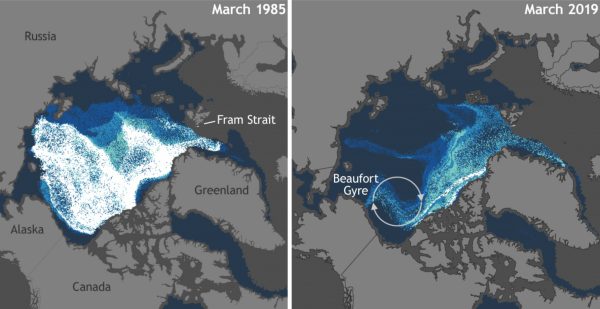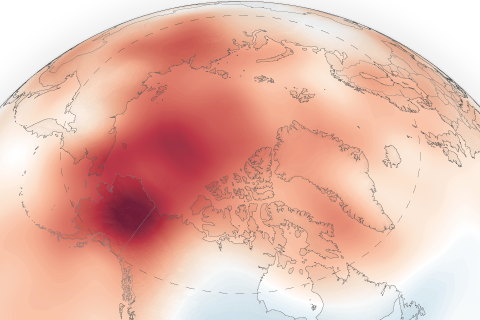
The Arctic is rapidly and dramatically changing, with continued warming of the air, land and sea. That’s the theme of the 2019 Arctic Report Card from the National Oceanic and Atmospheric Administration.
It was released Tuesday at a conference in San Francisco. While the general message is not a surprise, some of the specifics are sobering. Here are four:
No. 1: Surface air temperature. In 2019 the Arctic did not quite set a record, but look at the trend.
“The average annual surface air temperature over land for 2019 was the second highest since 1900,” said Matthew Druckenmiller from the National Snow and Ice Data Center. “The six hottest years on record in the Arctic have all taken place in the last six years.”
No. 2: Change brings more change. Consider permafrost. As it thaws it releases carbon to the atmosphere, as much as 600 million tons a year.
“This thawing of permafrost may now be acting to accelerate global climate change,” Druckenmiller said.
A warmer Arctic also means a greener Arctic, but those plants don’t suck up enough carbon to balance the increase. A warmer climate means permafrost emits carbon in winter, too. And a new study suggests the winter carbon release is two or three times higher than previously known.
No 3: The Bering Sea has now had two winters in a row that were almost ice free. That’s part of a larger picture: Sea ice is in retreat across the whole Arctic.
“The thirteen lowest summer ice extents have been in the last 13 years,” said Donald Perovich, a Dartmouth College professor who studies sea ice.
He says old ice is disappearing. Ice more than four years old is thicker and more resilient, he says, and young ice is more vulnerable to the elements. Back in the 1980s, Pervich says, about a third of the ice cover was made of that old, thick ice.
“It covered an area roughly the same size as the United States east of the Mississippi,” he said. “Now, in March of 2019, it’s 1% of the ice cover, and all that’s left is an area the size of the state of Maine.”
No. 4: These changes cause direct harm to real people. Mellissa Johnson is Inupiaq and lives in Nome. She was invited to speak at the report card roll-out. She explained that her community depends on sea ice. It’s the platform they need to hunt marine mammals. Johnson said it used to be that hunters only had to travel 10 or 20 miles to reach the ice.
“And now it’s, at minimum, 50 miles out, is where the sea ice is. And it’s having treacherous impacts to our hunters,” she said.
The warmer environment is degrading their food sources, too, she said, and that leaves less to go around. Animals have a thinner fat layer. Sea birds are sick. Berries don’t ripen when they used to.
And Johnson said they need snow cover and ice to travel between communities.
“Without that we become limited,” she said. “We become isolated. We become continuously sparse in our sharing.”
This is the 14th annual Arctic Report Card. It’s a peer-reviewed document compiled by 81 scientists from a dozen countries.

Liz Ruskin is the Washington, D.C., correspondent at Alaska Public Media. Reach her at lruskin@alaskapublic.org. Read more about Liz here.





